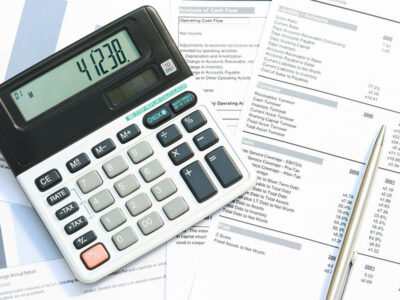
Here the links show examples using a construction company as the business example. A company’s organization chart can serve as the outline for its accounting chart of accounts. For example, if a company divides its business into ten departments (production, marketing, human resources, etc.), each department will likely be accountable for its own expenses (salaries, supplies, phone, etc.). Each department will have its own phone expense account, its own salaries expense, etc. COA stands for chart of accounts, which is a systematic arrangement of all the account titles and numbers a business uses for its accounting system.
The income statement accounts

A chart of accounts, or COA, is a complete list of all the accounts involved in your business’s day-to-day operations. Your COA is useful to refer to when recording transactions in your general ledger. The COA is a listing of all existing accounts including a description of sample of chart of accounts the specific use ofthe account. The GL contains the financial records of the organization, including the COA, and maintains the debit/credit balance information. Typically included, per the previous reporting list, are assets, liabilities, equity, revenue, and expenses.

Setting Up the Chart of Accounts
Owner’s equity measures how valuable the company is to the shareholders of the company. Simple record-keeping systems started appearing in the late Middle Ages and early Renaissance, thanks to merchants and traders who needed to somehow track their transactions and finances. Equity is the ownership value in a company, determined by subtracting liabilities from assets. In simple terms, it’s what you have in the business as a company owner (or one of the company owners) or, often, an investor. You can have multiple liability accounts in the COA, representing different types of your obligations. The total assets amount represents the value of all the company’s resources.
Ask Any Financial Question

FloQast™ Ops is a workflow manager that extends the power of FloQast Close, providing greater control over accounting operations and optimizing workflows across every function. I have primarily audited governments, nonprofits, and small businesses for the last forty years. So, let me summarize and say once more what the accounting sequence is.
It’s a fundamental accounting framework you use to organize your financial records and build reporting around. As your business grows, so will your need for accurate, fast, and legible reporting. Your chart of accounts helps you understand the past and look toward the future. A chart of accounts should keep your business accounting error-free and straightforward. This will allow you to quickly determine your financial health so that you can make intelligent decisions moving forward. A chart of accounts gives you great insight into your business’s revenue beyond just telling you how much money you earn.
Would you prefer to work with a financial professional remotely or in-person?
- The chart of accounts provides the name of each account listed, a brief description, and identification codes that are specific to each account.
- For instance, if you rent, the money moves from your cash account to the rent expense account.
- Current liabilities are short-term debts (a company should pay off within a year), like bills and short-term loans.
- Operating expenses are the costs needed to run a business day-to-day, for example, rent and salaries.
- It’s the backbone of a company’s financial record-keeping system that must be observed and maintained with the utmost care.
A chart of accounts is helpful whether you are using FASB, GASB, or special purpose frameworks. A chart of accounts is a list of all accounts used by a company in its accounting system. Get granular visibility into your accounting process to take full control all the way from transaction recording to financial reporting. Most modern accounting systems allow you to customize and expand your COA directly within the software, streamlining data entry and reporting. Each category should reflect the operations and financial activities of your business. Larger businesses might also need more detailed categories or sub-categories to accommodate diverse transactions and departments.
- Typically included, per the previous reporting list, are assets, liabilities, equity, revenue, and expenses.
- This team of experts helps Finance Strategists maintain the highest level of accuracy and professionalism possible.
- The chart of accounts (COA) is a list of accounts a company uses to record its financial transactions.
- The basic set of accounts is similar for all businesses, regardless of the type, size, or industry.
- For example, many accounts that are essential in manufacturing are not commonly used by retail businesses, including the composition of cost of goods sold (COGS).
Understanding the chart of accounts (COA) is important for anyone involved in business finances. It’s the backbone of a company’s financial record-keeping system that must be observed and maintained with the utmost care. COA empowers you to make smart financial decisions based on clear, organized information.
A chart of accounts organizes your finances into a streamlined system of numbered accounts. You can customize your COA so that the structure reflects the specific needs of your business. There are five main account type categories that all transactions can fall into on a standard COA. These are asset accounts, liability accounts, equity accounts, revenue accounts, and expense accounts. If necessary, you may include additional categories that are relevant to your business.

